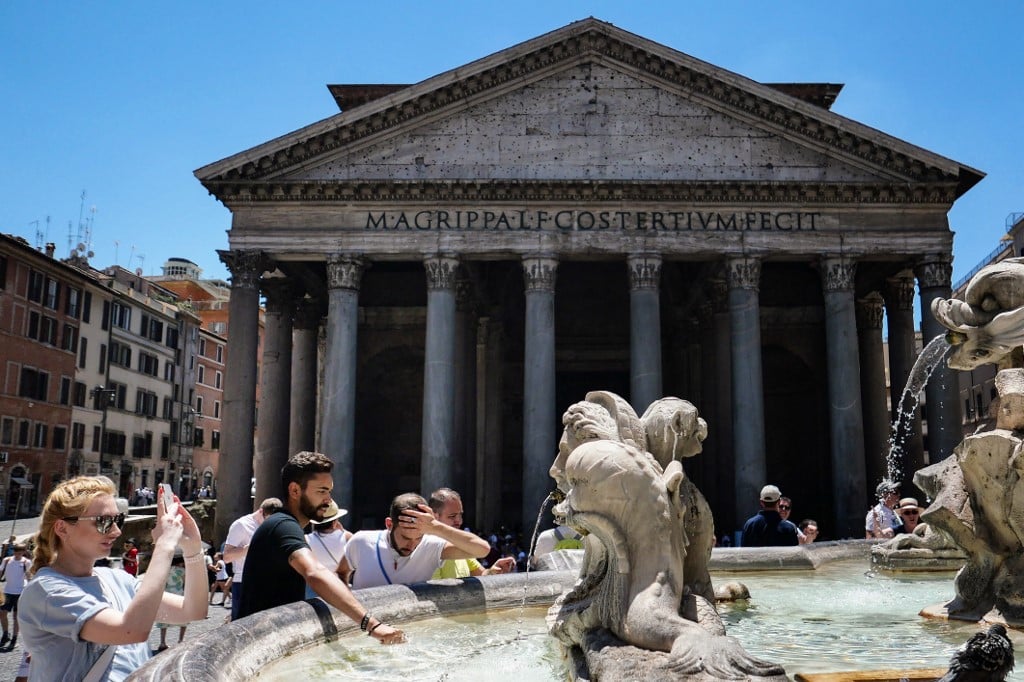What brought you to Italy?
I'd been teaching English in South America in 2012 and returned home on Christmas Eve, flat broke.
I started looking for jobs immediately and on January 7th headed out to Puglia to begin a new teaching job there.
I hadn't expected to be here after three years, but things can snowball….and they did.
How so?
Well, my girlfriend of seven years, Genevieve, was offered a one year master's in development at Roma Tre university, just after I finished teaching in Puglia.
So in September 2013, we moved to the capital. When she finished her masters in 2013, she got an internship at the UN's World Food Programme, which then turned into a full-time job.
Since coming to Rome, I've had several different jobs but I've been working in internal communications at FAO since October last year.
What kind of jobs have you had?
At first I was an English teacher – which was great. The pay's not great, but you get to interact with people all day long and the lifestyle is second to none. However, after doing it for years I'd become unsatisfied and didn't feel like I was doing anything constructive. I needed a new challenge.
I found a new job as a food tour guide in Rome's Trastevere area, which is probably the best job I've had. I got paid to tell groups about the history of the area while taking them to places where they could sample some of the best food and drink Rome has to offer.
After that, I found a job in communications with the NGO, Slow Food, but had to leave my girlfriend in Rome and move to Bra, Piedmont. I was employed to write, edit and translate articles for their English language websites.
Even though it was less fun than being a tour guide, it was closer to what I wanted to be doing – and I learned so much about the issues and politics surrounding food. After about eight months, I wanted to move back to Rome to be closer to my girlfriend and fortunately found a job at FAO doing internal communications.
My current job basically involves writing articles for the FAO's internal websites.
What would you say to someone thinking of moving to Italy?
The first thing I'd say is to relax about it. Moving to a new country isn't a big deal.
The second thing I'd say is to forget about money and career plans – at least in the short-term. I mean, I came without a clear plan but followed my passions for food and writing and have managed to find work.
I've been in Italy for nearly three years and it's honestly the most settled and happy I've felt since university. Lots of my university friends graduated and went to work in London's financial district. Perhaps I haven't been earning so much but in terms of experience it's been so varied.
What have been the biggest challenges and frustrations?
The language has been a challenge. I started studying when I moved to Puglia and learnt the basics pretty quickly. Since then though, I haven't been actively learning it.
I don't really struggle with it socially anymore, but there's still plenty I could be doing to improve.
As for frustrations, it's probably a cliché, but the bureaucracy drives me nuts. Even something simple like going to the bank can quickly turn into an ordeal in Italy. Also, simply crossing the road in Rome can feel like running the gauntlet.
In what ways has living in Italy changed you?
My lifestyle is probably more 'Italian' now – especially in terms of food. Before I came here I didn't drink coffee – but now happily have two or three sociable coffee-breaks each day.
I also eat dinner much later, which is something I only noticed recently when English friends came to visit and wanted to eat at 6pm, which by now is completely alien to me.




 Please whitelist us to continue reading.
Please whitelist us to continue reading.
Member comments